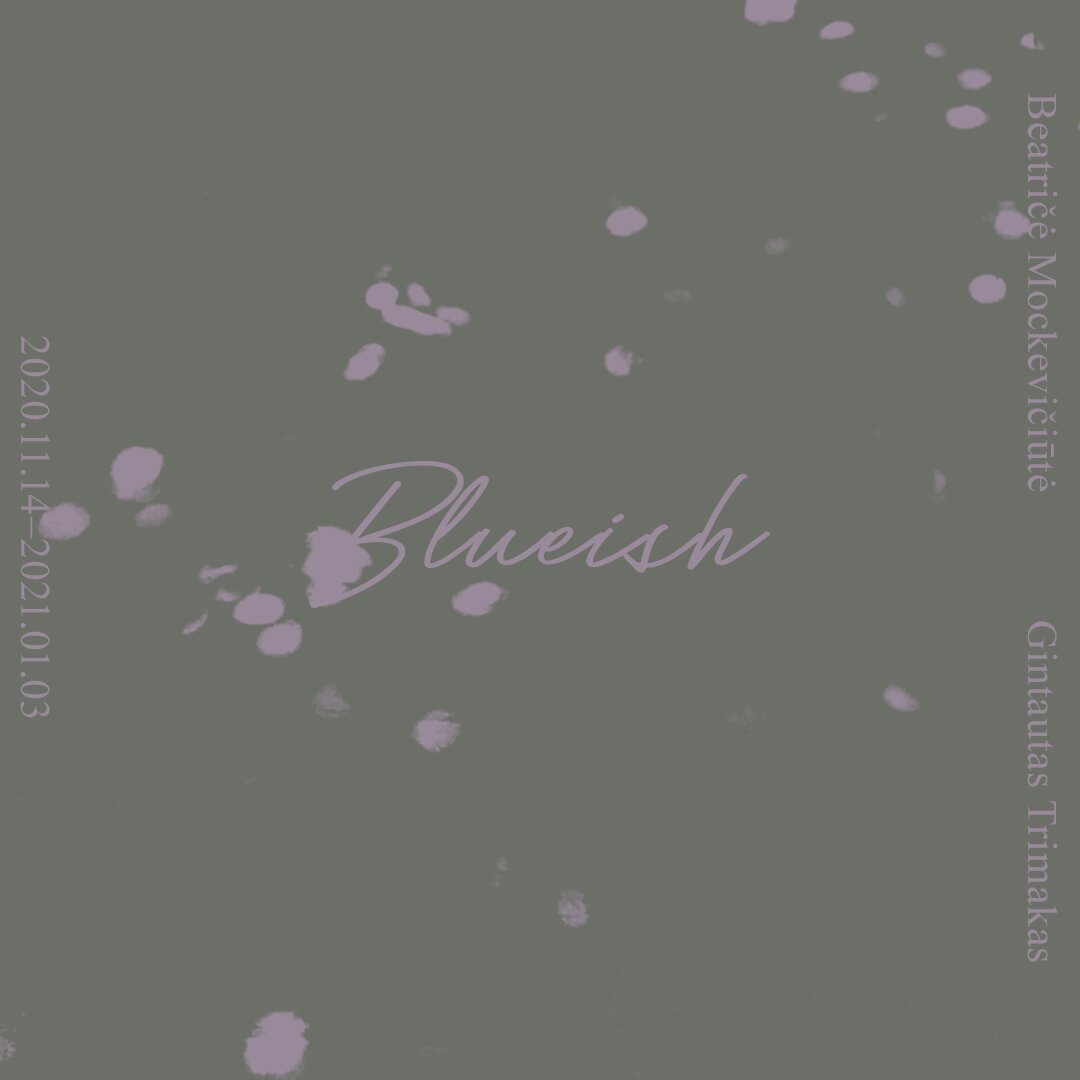2023
Anastasia Sosunova, Agnė Jokšė, Anton Karyuk, Naglis Kristijonas Zakaras, Goda Palekaitė ir Adomas Palekas, Iza Tarasewicz, Liliana Zeic, the unknown author of Grodno archive.
2023 03 17 – 05 01
‘In the beginning was the deed!’ are words from Johann Wolfgang Goethe’s “Faust”, that the scientist utters before making a deal with Mephistopheles, prioritising action over thought and word in changing the world order. These words were used as a slogan by the anarchist group Black Banner active in Białystok, Dnipro and Odessa in 1906, the slogan unambiguously expressing the use of aggressive physical force against the tsarist government and increasingly powerful industrialists and bankers. The history of this and various other anti-imperialist groups that operated in the territory that is delineated by current borders of Lithuania, Poland, Belarus, Ukraine, Moldova and Russia, was brought to life in 2021 by the exhibition “Na początku był czyn!” held in Białystok’s gallery Arsenal. Curators of this exhibition not only opened these archives, but also together with artists (and) activists reflected the context of today’s social, political and contemporary art transformations.
The exhibition “In the beginning was the deed!” organised at the Kaunas Artists’ House continues the narrative started in Bialystok with the history of anarchist movements in Lithuania. By opening the archives, this story turns the exhibition into a conversation about the ways of writing and reading radical collective and personal narratives, about the (im)possibility of resistance to dominant powers and their forms of representation, about the unevenness of the margins of everyday life.
During the exhibition, the social center Emma will host a discursive events program, which will include stories about bright rebellious personalities and little known archives, initiatives of resistance, drag, and self-publishing.
Researchers, and participants of events program: Viktorija Kolbešnikova, Aleksander Łaniewski, Tomas Marcinkevičius, Darius Pocevičius, Auksė Petrulienė, Asta Volungė, Querelle.
Opening day program:
19:00 Exhibition doors open at the Kaunas Artists’ House (V. Putvinskio str. 56)
19:30 Talk with Bialystok’s exhibition “Na początku był czyn!” curators Matthew Post and Katarzyna Różniak-Szabelsk
20:00 Exhibition tour with artists and curators
21:00 Opening party with Querelle at the social center Emma (A. Mickevičiaus str. 35)
Exhibition curators: Edgaras Gerasimovičius, Vaida Stepanovaitė
Research and public program curator: Agnė Bagdžiūnaitė
Design: Vytautas Volbekas
Organised by: Kaunas Artists’ House, Swallow (Vilnius), gallery Arsenal (Bialystok)
Project is funded by the Lithuanian Council for Culture
Thank you: Antanas Dombrovskij, Antanas Stanislauskas, social centre Emma collective
2022
Eric D. Clark, Michèle Graf & Selina Grüter, Laura Kaminskaitė, Sebastian Luetgert, Robertas Narkus, Eleni Poulou & Hilary Jeffery, Ulla Rossek, Julia Scher, Valerie Stahl von Stromberg, Hannah Weinberger, Martin Ebner, and Ariane Müller
Curators Martin Ebner, Audrius Pocius and Ariane Müller
2022 09 17 – 10 22
Eve Kosofsky Sedgwick: The Weather in Proust
Swallow is delighted to invite you to “The Weather in Fred Sandback”, an exhibition imagined by Martin Ebner, Audrius Pocius and Ariane Müller and featuring works, music, and gestures by Eric D. Clark, Michèle Graf & Selina Grüter, Laura Kaminskaitė, Sebastian Luetgert, Robertas Narkus, Eleni Poulou & Hilary Jeffery, Ulla Rossek, Julia Scher, Valerie Stahl von Stromberg, Hannah Weinberger, Martin Ebner, and Ariane Müller.
“The Weather in Fred Sandback” is an exhibition conceived in the space between Berlin and Vilnius, and then in Venice and Kassel when we were able to meet again, in the bliss of restarting to talk and to plan. It is until now an unreal exhibition, with us trying to reassemble a world out of scattered parts, objects promised but lost—artworks in which we have encountered something real. The Weather in Fred Sandback strives to reconstruct the world out of sounds, gestures, customs, depictions and documents that we still have from it.
During the opening night, the visitors will be greeted with a reading performance by the iconic Eric D. Clark, the artist behind Whirlpool Productions’ “From Disco to Disco” as well as a performance entitled “Pedestrian” by Michèle Graf & Selina Grüter, embodied by Saulė Noreikaitė and Hanna Ijäs. Afterwards, we will be heading downstairs to Bar 2123 for a concert of “Organza Ray” a duo formed by Eleni Poulou, founder of “Noshe Noshe” and former keyboard player of the British band “The Fall”, and Hillary Jefferey, the trombone player of the celebrated contemporary music ensemble “zeitkratzer”. During the concert, the sounds of trumpet, trombone and bass will blend in with beats of electronic music. Finally, we will be closing the night dancing to the music selection by the legendary DJ Eric D. Clark.
Evening programme:
18:00 opening of the exhibition
19:00-20:00 Eric D. Clark, reading performance at Swallow;
20:00-21:00 Michèle Graf & Selina Grüter, “The Pedestrian” at Swallow, performed by Hanna Ijas and Saulė Noreikaitė;
21:00 concert of “Organza Ray” (Eleni Poulou & Hilary Jeffery) at Bar 2123;
22:00 Eric D. Clark, DJ set at Bar 2123.
Image: Sebastian Luetgert: UNPROMPTED #106, excerpt
Financed by the Lithuanian Council for Culture
Exhibition In the Hands of our Eclectic Physicians
Curator Vaida Stepanovaitė
2022 08 12 – 09 11
Visitors will be invited for fireweed tea (& more) which will be brewed from fireweed leaves collectively foraged, dried, and fermented during a workshop in July around SODAS2123.
Fireweed has woven, entangled, and taken root in this exhibition – a weed blossoming in midsummer, also nicknamed as invasive or even colonial. Not exactly welcomed by the human in his local ecosystem, the plant has its way of traveling – shedding its seeds where others don’t dare to go. Where the soil – or a roof, or a concrete pavement – has been marked by progress: by construction waste, railway tracks, oil spills, and other objects or weapons. Taking long budded root, fireweed sucks up poison as if a healer bandaging Earth‘s wounds.
Isn‘t it weird for a plant to be humanly invasive, alien, as if stumbled into the wrong private yard? The seed flies with wind, without following directions set by global logistical capitalism. In the face of ecological tensions – no, catastrophe – the exhibition follows the fireweed across calcified grids of consumption, looking for alternative epistemologies and healing movements. Movement from urban gardens and suburban meadows all the way to the makeshift stalls of local markets and neighborhood pavements – where communal insider agreements and unwritten rules are abundant; and the (non)human migration is a survival condition rather than a threat.
Artist Marija Nemčenko lives and works between Glasgow and Vilnius. Member of Lithuanian Interdisciplinary Artists‘ Association (LIAA) and Scottish Artists Union (SAU). Her research activates cultural interlinks between Eastern and Central Europe and Middle East, which she explores through questions of migration, cultural stereotypes and historic parallels. Attending critically to the construct of a ‚periphery‘, the artist asks what knowledge arises from these ‚peripheral points‘? Marija‘s work is marked by high contrasts and humor driven by these clashes, as well as bright, eclectic aesthetics of everyday.
https://www.marijanemcenko.com
Curator – Vaida Stepanovaitė
Soundtrack recording and mixing – Sholto Dobie
Soundtrack voice – Dovilė Šimonytė
Photoprint – Arielink
Design – Vytautas Volbekas
Consultant on SODAS2123 environmental architecture – Ona Lozuraitytė-Išorė
Consultant on growing fireweed at SODAS2123, co-curator of fireweed foraging workshop – Aušra Vismantaitė
Consultant on fireweed habitats in Naujininkai and Rasos districts, co-curator of fireweed foraging workshop – Vaiva Aglinskas
Exhibition partners SODAS2123 and Lithuanian Interdisciplinary Artists‘ Association (LIAA).
April to July, 2022 Marija Nemčenko worked on the exhibition at LIAA residencies at cultural complex SODAS 2123.
Marija Nemčenko was supported by the individual grant from Lithuanian Council for Culture.
Exhibition is open 11 August – 11 September
III-V, 4-7 pm+ 20 Aug, Sat, 12–3 pm
+ 3 Sep, Sat, 12-4 pm
+ 10–11 Sep, Sat-Sun (times TBA)
For other times contact vaida@swallow.lt, +37061347187
Echopraxia
2021 11 26, 20:00
}}}}
Echopraxia in Greek etymology is an involuntary urge to imitate the movements of other persons. Beginning with simple gestures, rhythms and voice, this unintentional mimicry becomes a reoccurring, yet perpetually evolving leitmotif of the piece. Gradually developing into a pulsating and complex manifold of music, choreography, and image, it eventually fills, outgrows, and pours outside the space of gallery 1986.
Amid this swelling and surging action, the opera’s plot is gradually unraveled: at first similar and hardly distinguishable, the characters grow more individual and memorable. Through words, dances, and songs the actors narrate their hopes and anxieties while trying to imagine a future against a backdrop of an ever repetitive present. Reality is always already fantastic, yet is there still space for fantasy?
Thus, in the opera, the motif of ‘echopraxia’ unfolds as a metaphor. It expresses not only that the world is continually molding us, but also that we ourselves reciprocally form the world. Technologies, ideas, and habits leave marks on our bodies, ruptures in our movements, patterns in our thoughts. Imperceptibly, did not our economy become a biological, rather than a social category? Is exchange not our sixth sense, dominating the remaining five? The perpetual metabolism of materials, content, and value gave nature a human face. Do we recognize it? Did we arrive where we wanted? Do we know where further to go?
After the performance at 11 pm, the night will continue into the morning with dances and music by DJs Local Girls, Simas Boo and Tadas Quazar.
𝐎𝐩𝐞𝐫𝐚 + 𝐝𝐚𝐧𝐜𝐞𝐬 }} from 15 eur.
𝐃𝐚𝐧𝐜𝐞𝐬 }} from 7 eur
____________ _ _ _ _ _ _ __
Artist collective INФOPSIN began in 2019 in Oslo with the idea of the collective as the basic unit of production. It consists of five artists – Ragnhild Aamås (NO), Lesia Vasilchenko (UA), Istvan Virag (HU), Ayatgali Tuleubek (KZ), and Ignas Krunglevičius (LT).
𝐏𝐞𝐫𝐟𝐨𝐫𝐦𝐞𝐫𝐬: Javon Ryon Bennett, Silje Aker Johnsen, Magdalene Solli, Synne Elve Enoksen, Nikita Berezko, Nikita Berezko, Greta Bernotaitė, Valerija Gneuševa, Petras Lisauskas, Edvinas Mikulskis, Saulė Noreikaitė, Elmyra Ragimova, Austėja Vilkaitytė
}}}}}
Partners – gallery 1986 and Oslo Kunsthalle.
The premiere in Lithuania is financed by the Lithuanian Council for Culture. The project is also endorsed by the Arts Council Norway and Norwegian Visual Artists Fund.
GP and a mask is needed for entry.
Tickets will also be available at the door.
BARRY DOUPÉ
AMIGA Works,
Curator Post Brothers
2021 11 05 – 12 18
Swallow is delighted to present Barry Doupé’s AMIGA Works, the Vancouver-based artist’s first solo exhibition in Europe.
When the Commodore AMIGA was released in 1985, it was marketed as the world’s first multimedia multitasking personal computer. Using the gendered conventions of boyish programmers, the computer’s name (Spanish for “female friend”) gave an impression of “user-friendliness” and placed it alphabetically in front of its competitors Atari and Apple. To persuade early PC users who wanted a “creative edge”, the launch even featured a demonstration by Andy Warhol, who generated a live portrait of Debbie Harry on stage, and remarked that he liked how the pixelated images already looked like his own artwork. Due to its peculiar graphic and processing capabilities, the AMIGA became the go-to tool for animation, video editing, graphics, and video game design in the 80s and early 90s. Key to this popularity was Electronic Art’s bitmap graphic editing software Deluxe Paint, which was first developed as an in-house art development tool that gradually became the de facto image and animation editor for the platform. The program’s broad range of features and its novel interface design set a standard, and anticipated the influence and ubiquity of digital image making and animation today.
AMIGA Works features an unabridged presentation of Barry Doupé’s 100 AMIGA Paintings (2016), an extensive series of pictures made on the commodore AMIGA with the software Deluxe Paint V (the final version of the program). For many years, Doupé has used these tools from a bygone era to generate some of his idiosyncratic animations, which draw from the subconscious and are developed through writing exercises and automatic drawing. The artist began the ambitious, yet somehow manageable, task of making 100 paintings as a sort of casual respite during the laborious five-year production of his psychosexually charged animated film Distracted Blueberry (2019). The hundredfold static images on display at Swallow were produced as a sort of procedural game of meditative problem solving, an exercise in creativity with constraints.
By interrogating the technical quirks and bizarre accidents of the pixelated software as a language, Doupé explores its peculiar influence on the production of pictures. Each individual image has its own rules, addressing generic conventions from the history of painting using specific tools, features, or restrictions in the anachronistic program. Intuitive, playful, surreal, and unpretentious, every painting is its own unique and engaging puzzle that teases thematic tropes and explores specific formal principles such as figure/ground relations, mark making, gesture, repetition, perspective, tension, flatness, representation, compositional weight, landscape, materiality, texture, surface, color, portraiture, and so on. The resulting hecatontarchical hoard gives an overview of the basic categories of pictorial practice, demonstrating painting’s conventions and constant redefinition through an impressive inventory of eccentric flat images. As singularities, each painting articulates its own logic and demands, but as a multitude, a narrative emerges between control, automatism, and the painterly that confuses any assumptions about the sacred role of the artist’s hand and the impersonality of the machine.
This use of passé technologies and media invokes a nostalgic melancholia for a cultural techno-adolescence. Neither ironic nor fetishistic, the series functions as a sort of counterpoint to the ideology of high-definition realism in digital media today. Given painting’s status as a stand-in for art-as-such, the transformation of painterly gestures into code that outputs pixelated imagery suggests the annihilation of differences between mediums by the digital. Indeed, this poor resolution incorporation of the past (and all information generally) into the digital world recalls Deluxe Paint’s own iconic sample images of Botticelli’s Venus and the visage of King Tut. Doupé responds to the digital logic of quantification by exploring qualitative transformations. The conflict between hand and technology is perhaps most apparent in “hard edge” abstractions that upon closer inspection, divulge broken, fragmented, pixelated lines. By revealing and disfiguring qualities that are seen as “essential” or “inherent” to painting and digital graphics, painting is revealed not as specific liquid material applied to a surface, but as a procedure, a mode of thinking and doing.
The laserjet printouts of digital bitmap images are paintings because they were made with Deluxe Paint. Its interface is a skeuomorphic simulation of the painter’s toolbox and blank canvas. The artist draws lines by the simple drag of his mouse, modifies and transform them, fills fields of color with a single ‘click’, and changes parameters and tools with a combination of hotkeys. The essence of Deluxe Paint brushes is this: anything can be a brush, so you can paint with a single pixel, a pictorial element, a whole screen, or anything in-between. With each click of the mouse and key pressed, Doupé opens a field of virtualities, demonstrating a kind of imagination based not on the interpretation of the world but on calculating effects.
Deluxe Paint incorporated animation into its graphic user interface and overall operating logic, allowing the user to produce images in sequences, “color cycle” the entire palette to make still images appear to move, and had an “animbrush” setting whereby animated sequences could be moved around like any other element on the screen. Doupé’s video loops Vhery (2013) and Whaty (2012) stretch the animation capacities of the software to its lineaments and, in doing so, uncovers some of animation’s core principles. Vhery is an abstract looping sequence of lines and textured planes, repeating state changes and moments of vulnerability, evolution, involution, and overturning. Though it may appear as if the sequences are stochastically auto-generating, the video was “hand” drawn frame by frame, pixel by pixel. The line is given an uncanny independent agency, perfectly illustrating Maurice Merleau-Ponty’s comments that:
“The beginning of the line’s path establishes or installs a certain level or mode of the linear, a certain manner for the line to be and to make itself a line, “to go line.” Relative to it, every subsequent inflection will have a diacritical value, will be another aspect of the line’s relationship to itself, will form an adventure, a history, a meaning of the line…” (“Eye and Mind,” 183)
At times, the computer graphic lines correlate to give the impression of recognizable forms emerging, but these never resolve, leaving a continuously changing painting where the formal elements and their relations are in constant renegotiation. Doupé’s looped video Whaty further teases disequilibrium and the will to recognize patterns in random information, provoking pareidolia by portraying a series of morphing human faces. The video is an updated homage to James Stuart Blackton’s 1906 Humorous Phases of Sunny Faces, one of the earliest animated films, which used stop motion and “lightning sketches” on a chalkboard to produce comic scenarios. Here, Doupé explores the ways personality and countenance are used to give drawings life in animation and by addressing the face as a site of identification and expression. At any moment, the moving visages are caught somewhere between their emergence into form and their disappearance into the formless, suggesting continuously changing identities and emotional states. This polymorphic capability to shift and change form is what Sergei Eisenstein described in the early animated cartoons of Walt Disney as “plasmaticity” based, of course, on the omnipotence of protoplasm, which contains in “liquid” form all possibilities of future species and forms. The video exposes a peculiar figuration found in animation that, as Keith Broadfoot and Rex Butler note, is a “figuration in which the figure is no longer opposed to its dissolution but only given […] in or as its very dissolution.” Through these sketchy and squash-and-stretched modes of embodiment, Doupé draws attention to perception as always in process, and considers what animated worlds could mean for the self.
Through his labor-intensive sequences of images, Doupé explores how technical limitations and structural constraints can yield unexpected creative potentials. AMIGA Works makes visible that pictorial techniques have agency and determinations all their own. By exploring the AMIGA as an early multimedia device, the works unearth a certain coding of pictures in general that crosses media and traditions. Lev Manovich and other contemporary animation and media theorists often assert that due to the ubiquity of animated post-production in moving images today, “cinema can no longer be clearly distinguished from animation. It is no longer an indexical media technology, but rather a subgenre of painting.” One could go further with this and recognize that animation is not only an omnipresent logic in our contemporary images and interfaces, but also somehow appears at the origin of painting itself.
Barry Doupé (b. 1982 Victoria, BC, Canada) is a Vancouver based artist primarily working with computer animation. His films use imagery and language derived from the subconscious; developed through writing exercises and automatic drawing. He often creates settings within which a characters’ self-expression or action is challenged and thwarted, resulting in comic, violent and poetic spectacles. His films have been screened throughout Canada and Internationally including the Ann Arbor Film Festival, International Film Festival Rotterdam, Anthology Film Archives (NY, USA), Lyon Contemporary Art Museum, Pleasure Dome (Toronto, Canada), MOCCA (Toronto, Canada), Whitechapel Gallery (London, UK), Centre Pompidou (Paris, France), the Vancouver Art Gallery (Vancouver, Canada), and the Tate Modern (London, UK). His practice also includes music, performances, sculptures, drawings, writing, and digitally mediated images.
Text by Post Brothers
Photos:
Laurynas Skeisgiela
Translations:
Alexandra Bondarev
Edgaras Gerasimovičius
Installation:
Jokūbas Adamonis
Graphic design:
Vytautas Volbekas
Partners:
Embassy of Canada to Lithuania,
Sodas 2123,
Contemporary Art Centre Vilnius
Thanks to:
Wil Aballe, Audrius Antanavičius,
Justina Beniušytė, Antanas Gerlikas,
Dovilė Grigaliūnaitė, Dennis Ha,
Virginija Januškevičiūtė, Ona Juciūtė,
Jesse McKee, Ignas Meilūnas,
Ignas Pavliukevičius, Audrius Pocius,
Marina Roy, Antanas Stanislauskas,
Vaida Stepanovaitė, James Whitman
Fabulist Manifesto: Audio / Visual Agitprop (for Children)
2021 08 27 – 10 16
Fabulist Manifesto: Audio / Visual Agitprop (for Children) – an exhibition by Studio for Propositional Cinema. On the most general
level, the show could be received as a commentary on the pervasiveness of
mythical narratives and their ambiguous role in our culture; they at once
clarify and obscure the world in which we live in. In order to grasp this
tension at its most fervent, Studio for Propositional Cinema locates these
contradictions in the everyday life of children, a locus where fantastical
imagination is inhibited by normative indoctrination and open questioning is
met with prefabricated answers. Fabulist Manifesto elaborates and builds upon this dialectic of curiosity and
indifference to the point where we are compelled to ask: could we once again
engage the narratives that glue our lives with childish inquisitiveness in
order to recycle, reinterpret and reenchant our world?
prints present archival documentation of everyday life of schoolchildren in
the 1950s. They are put into sequence by a manifesto previously published
by A Gust of Wind, a publisher who is also a fictional
character appearing in narrative works by Studio for Propositional Cinema. The sequence is reframed here as
a 16 mm film portraying children engaging with the sequence of the images.
By observing, studying, and mimicking them, they build an additional
narrative layer – they engage in critique, they receive the narrative and
overcome it. Following this series of transpositions and montage the Fabulist Manifesto emerges as a gesture: by
repeatedly performing and mediating the sequence of images and text, Studio for Propositional Cinema manifests
both the fragility and potency of our quotidian myths, revealing their
imperviousness and hinting at possibilities for changing them.
Studio for Propositional Cinema was inaugurated in
Düsseldorf, Germany in 2013, and have since used the exhibition format as
their primary means of dispersing narratives. They are currently
constructing A Manual for Retaining Light in Dark Ages for a monographic exhibition at Museum Abteiberg,
Mönchengladbach in 2022. Myths and Manifestos, a
compendium of their writing published by Kunstverein München and Verlag der
Buchhandlung Walther König, will be released September 2021.
Audrius Pocius
Works on Display
Studio for Propositional Cinema
Fabulist Manifesto 2021 Installation with three parts:
-
24 aluminum frames with silkscreen ink on glass and silver gelatin
prints, each 51.2 x 51.2 cm, total installation: 164 x 446 cm; -
sound on hand-cut vinyl record with record player and speakers on
wall-mounted table, 7 minutes; 16mm film with 16mm film projector, 7
minutes; white rectangular screen painted on purple rectangular screen
painted on wall, 260 x 446 cm - painted purple texts on wall, language and dimensions variable.In Place of a Colophon
We would like to express our sincere gratitude to all those who contributed
their time and thoughts to the realization of this exhibition. Monika Kalinauskaitė and Egija Inzule for the warm welcome and permission to
stay and film at Nida Art Colony. Vytautas Kazimieras Juozėnas for his skillfull and
relentless work in filming, developing and editing the 16 mm film. The young
actors Elzė and Davitis Kalmakhelidze, Tėja and Morta Radžiūnaitė, Luna Myškina, Jonas Motuižis and Gabrielius Ivanauskas for their patience on set
during a hot summer day. Dovilis Paliukas for his care and precision carving
the vinyl records. Jokūbas Čižikas and Alexander Bornschein for their attentive ears during the recording and editing of
the audio recording for the vinyl. Lotte Speiser Ramirez and Orius Narkus for lending their voices to the Fabulist Manifesto. Markus Paul Müller and Susanne Gollwitzer at Recom-Art for their support
precision with photographic production, in warm memory of Christiane Hardt. Antanas Gerlikas and Laura Kaminskaitė for their
untiring help and support in installing the exhibition. Nerijus Rimkus for his accurate glance while
developing the graphic design of the exhibition. Jurgis Paškevičius for his rigor in manufacturing the
support structures in the show and Sam Chermayeff for designing them. Tanya Leighton and the staff of Tanya Leighton Gallery for their ongoing support. Eglė Trimailovaitė, Vytautas Volbekas, Yana Foque, Edgaras Gerasimovičius and Vaida Stepanovaitė for
their friendship and support throughout this whole process. In
addition, Studio for Propositional Cinema thanks and celebrates Lorraine Harrison for her lifelong commitment to improving childhood education.
We would also like to thank Justė Beniušytė, Deimantė Bulbenkaitė, Adas Gecevičius, Andrius Šoblinskas, Aistis Žekevičius, „Rėmelis.lt“, Studio „Sponge“ and Tadas Vėbra Arts Workshop.
Fabulist Manifesto: Audio / Visual Agitprop (for Children) would not have been possible without the generous financial
support by Lithuanian Council for Culture and the Canadian Embassy in
Lithuania as well as the cooperation of Nida Art Colony. The exhibition will
be open for visitors 27th August – 16th October III-V 4-7 pm, VI 1-4 pm
![]()


Foam City
2021 06 05 – 07 31
Polish artist Tomasz Kowalski’s solo exhibition “Foam City” marks the first solo presentation of the artist’s work in Lithuania, organised as part of the 14th Baltic Triennial – The Endless Frontier.
In Foam City, Kowalski’s frequently used bubble motif becomes an allegory of a continuously produced human environment. The soapy and only partially transparent membrane of the bubbles reflects projections of external realities. Although, when viewed from the inside, these possible worlds seem to be right in front of us, as soon as we try to reach them, the bubble bursts. The bubbles act like optical devices, whose swelling, vibrating iridescent surfaces distort and multiply the reflections of our personal and communal lives.
The exhibition features a demon – the protagonist of a hypothetical situation defying the second law of thermodynamics, devised in 1867 by the Scottish physicist James Clerk Maxwell. The situation is usually depicted as a space made up of two rooms with two-coloured bubbles moving across it at different speeds. The door separating the two rooms is controlled by a demon, who keeps opening and closing it, outrunning the moving particles and thus separating the warmer from the cooler ones in different rooms. Thus, one room gradually warms while the other one cools down, and thermodynamic equilibrium is never reached. Maxwell’s demon is an articulation of how within the boundaries of the collision between two separate systems – both at the molecular and the political level – operate eccentric, untrustworthy forces that are not subject to their rules and orders. In ways known only to themselves, these forces distribute and regulate the invisible flows of information, energy and matter circulating between the two environments. Moreover, since they are at work both internally and externally, the collision with them cannot be represented on a coordinate plane or any other diagram. How we feel their action is rather “from the inside” – as an inflammation in the body or an irritated state of consciousness in which our sensorium instinctively tenses up and begins to react by saturating the colours of the environment, reducing all shapes of unclear boundaries into geometric figures and combining individual sounds into rhythms.
In Foam City, Kowalski’s drawings, paintings, sculptures and sound works offer a dreamlike critical image of contemporary social life, where the invisible boundaries of our personal security and intimacy are loosely fused with the material limits of the city – fences, streets, walls of buildings. The building material of the foam city – bubbles, equally fluid and solid, fragile and plastic, combine to form a growing and renewable mass of foam, with no established distinction between inside and outside. Here, Maxwell’s demon sorting the particles into separate rooms is not an allegory of an exception to a physical law, but the only rule of an unpredictably changing social and material order. Kowalski’s works cultivate a troubling and enchanting, both atomised and fluid image of a reality, in which life that happens on the fringes of society, culture and the imagination is brought to the foreground.
Tomasz Kowalski (born 1984 in Szczebrzeszyn) has had solo exhibitions at the Centre for Contemporary Art Ujazdowski Castle Warsaw, Contemporary Art Museum St Louis, group exhibitions at Kunsthalle Wien, de Appel Art Centre, MUMOK, Centre Pompidou, MSN Warsaw, SMAK Ghent among others. His works are in the public collections of Centre Pompidou, MUMOK, MOCAK, Frac des Pays de la Loire, Francois Pinault, Boros, Olbricht. He is the winner of the Guerlain Foundation Drawing Award 2014. He runs Alicja, a music label releasing various artists and his own music and sound-plays.
Graphic design: Nerijus Rimkus and Vytautas Volbekas (the illustration contains a fragment of a drawing by Tomasz Kowalski)
Translation: Alexandra Bondarev and Aistis Žekevičius
Exposition installation: Antanas Gerlikas
The exhibition was open for visitors 5th June – 31st July
Many thanks to Justė Beniušytė, Alexandra Bondarev, Antanas Gerlikas, Edvard Gotovski, Laura Kaminskaitė, Viktoras Musteikis, Vytautas Volbekas, Antanas Stanislauskas, Lukas Škimelis, Aistis Žekevičius and UAB “Baltic Film Transport”.
Express method
Author publication–artist notes
Anastasia Sosunova, Express Method
Author publication–artist notes



„Express Method” – artist notes that have taken the form of a printed author publication. As an ‘excursus to realms beyond the exhibition terrain’, these notes lead through multiple conceptual and material nodes formed through – sometimes slow and extensive – time, even if those nodes at first glance don’t have that much in common. Instead of proposing an all-binding red string, the text allows the already fragmented world to keep coming apart, and come together in the most peculiar shapes. Everyday charms, enchantments of immediate-effect, magic tablecloths, furniture without memory, ethnographers who have become disenchanted with their life’s work and have gotten all the things wrong, and electric fences of new neighborhoods for the supposed protection from the monsters. These are the rituals that embody personal and communal practices; fictions making up alternative codes to soothe our anxieties. Accompanied by the author’s etchings, these notes engage with the other texts and their authors, reminding that notes are one of the ways to make a connection and stay in it.
Gathering the little pieces of the puzzles people and communities construct themselves through, I am interested in secular rituals of identification – rituals and gestures that reflect a profound desire to discover passage or protection; a rational and, at the same time, magical action that would pave the way for a new life and new self-perception. To learn a hack. A secret code. A method. A spell. Before and after, once and for all.
Edited by Vaida Stepanovaitė
Design by Vytautas Volbekas
Translationby Austėja Banytė
English proofreading by Noah Brehmer
Published by Swallow, in collaboration with project space Kabinetas
Financed by Lithuanian Council for Culture
ISBN 978-609-96226-0-6
80 pages
2021
Trieb
2021 05 28 – 19:00-20:00 ir 20:30-21:30
2021 05 28 – 19:00-20:00 ir 20:30-21:30
Through the object of the knife, Trieb explores the logic behind the action of cutting. The capacity to think rationally or think ‘sharply’ is what historically separated the Human from the animal and other categories. At the occasions when we say that someone has a sharp hearing or sharp vision, natural language demonstrates how sharpness and goodness are used coextensively in reference to perception. Thus, the sharpness with which the knife slices through matter resembles the order of cognitive processes that are at work when we engage with our environment by means of sense perception.
Throughout the history of Western thought, body and mind have been placed at the opposite ends of the spectrum of cuttability- material body as infinitely divisible and immaterial mind as essentially indivisible. The body “contains” the mind and thus they are inseparable, even though the exact place where the body ends, and the mind begins can be rather unclear. Trieb takes up this canonical “problem” of Western philosophy and reexamines it through poetry, animation and movement.
In the work, Liza Baliasnaja performs a thought experiment in which the unity of body and mind is substituted with the one of body and knife. She examines what happens when the immaterial mind which seems to work like a knife is actually looked at as if it was a graspable object with specific physical qualities. She asks what does it mean to think and sense like a knife and what are the material consequences of conceptualizing thinking as cutting.
The performance offers a journey of cutting through language, through body, through fabric, through paper that discovers, and bursts open the potential for an unusual order of things, for incision and insertion of new meaning. Trieb, which is german for drive, desire and instinct, becomes the force behind the knife-mind that wants to test cut all that appears on its way including one’s own sense of the self.
Liza Baliasnaja (b. 1994) is a dance artist based in Brussels, born in Lithuania. After graduating from P.A.R.T.S in 2016, she has been involved as a performer in the works by Ula Sickle, Eglė Budvytytė, Eszter Salamon, DD Dorvillier, Mårten Spångberg and Lenio Kaklea and worked as an artistic assistant with Eszter Salamon, Cassiel Goube, Christine de Smedt and Myriam Van Imschoot. In 2018 she was invited for a residency at Nida Art Colony where she collaborated with Sidney Barnes on a duet FIGURES that was later shown in March Hare Festival in Tel Aviv and New Baltic Dance Festival in Vilnius. In 2019 she worked on choreographic score for four performers COMMENSURATE TO BE WITH which was shown in museums and galleries in Lithuania, Israel and Belgium. In 2021 Liza premiered her solo TRIEB in Batard Festival in Brussels. Since 2019 Liza teaches theoretical and practical courses at the Lithuanian National Academy of Music and Theater. She also works as a mentor/ process companion in the framework of P.A.R.T.S Training Cycle and a recently established research platform ‘BITES’. Next to her professional engagement with dance, Liza studies Philosophy at the University of KU Leuven. Currently, she is developing a collaborative project L’inconnu together with Christine de Smedt and Theo Livesey.
Credits
Idea and performance: Liza Baliasnaja
Sound: Jokūbas Čižikas
Artistic advising: Stefan Govaart, Alissa Šnaider and Laura Stellacci
Animation: Liza Baliasnaja together with Federico Vladimir Strate Pezdirc
Costume: Laura Stellacci
Scenography: Liza Baliasnaja, Machteld Lambeets and Laura Stellacci
Project support: Lithuanian Council for Culture
Co-production: Workspacebrussels and Kunstencentrum BUDA
Residency support: Kanuti Gildi Saal, Workspacebrussels, Kunstencentrum BUDA, Kunstenwerkplaats, Theatre Balsamine
Special thanks to Nicola Airo, Theo Livesey, Christine de Smedt, Amanda Barrio Charmelo and Simon Baetens
2020
Diluvial Valleys
Kuratorė Vaida Stepanovaitė
2020 04 16 – 2021 05 22
Diluvial Valleys is Anastasia Sosunova’s first solo show in Vilnius. The exhibition will be accompanied by dual language author publication (publisher Swallow) which is to be presented later on.
The exhibition opening will take place on 16th April, 2-8 pm. We can accommodate 2 people at a time.
The exhibition follows the floods,- those arriving suddenly, flowing over and back, sweeping away. Catastrophic waters having bursted in times of the past, pressured and shaped the surfaces. Sowed the natural furrows with stones and fossilised creatures that appear within the openings of the earth layers. Diluvial geology explores these layers, reading out the origin of the world in their hollows and streaks. Inflows of emotions and changes leave curious traces as well. Sometimes, when looking for a safer hill, forest, or valley, we inhabit the neighborhoods – closed off, private, fenced. With signs of warning, we defend ourselves against the sudden ebbs and flows, against the currents unknown. The exhibition takes these myths and objects of creation, and seeks to use them anew — repurposing the recurring visions into images filled with the pleasure of adornment, into things of everyday, and mythical artifacts; they will be read by the geologists of the future.
Diluvial Valleys comes out of themes and approaches long developed in the creative work of Anastasia Sosunova. Her interdisciplinary practice consists of video, installation, sculpture, graphic, and texts. By employing personal stories, images framing the locations, and subtle material gestures that people leave in their habitats, Anastasia weaves them into wider stories about the communities and identities to come. Anastasia has recently shown her work at: in 2021, group show On Survival (Galerie Britta Rettberg, Munich); in 2020, Riga International Biennial of Contemporary Art 2, Artists’ Film International (Whitechapel Gallery, London), Double Exposure / Roots to Routes (Le Corbusier, Manifesta 13, Marseille), Baltic Triennial 14: Intro ‘The Maze and The Lighthouse’ (CAC Vilnius), and elsewhere.
Exhibition curator Vaida Stepanovaitė.
Video work in the exhibition is presented together with Videograms platform (www.videograms.online).
Exhibition and publication graphic design:
Vytautas Volbekas
Video work soundtrack:
Miša Skalskis
3D elements animation for video work:
Laurynas Keleras
Exhibition installation:
Antanas Stanislauskas
Exhibition and publication is financed by the Lithuanian Council for Culture.
Partners:
„JCDecaux Lietuva“, Videograms, project space Kabinetas
Biggest possible thanks goes to:
Edgaras Gerasimovičius, Monika Lipšic, Marija Nemčenko, Audrius Pocius, Jeronimas Seibutis, Rūta Stepanovaitė, Vaida Stepanovaitė, Dalibor Sternadel, Aliona Viršutienė
BLUEISH
Curator Audrius Pocius
Due to the quarantine announced in the country in fight with the spread of
COVID-19, there will be no public opening of the exhibition or other
physical events in the exhibition space taking place. A special introduction
video will be published on the opening day of the exhibition presenting the
displayed works in more detail along with interviews with the authors.
Accompanying photo and video content will also be published regularly over
the course of the exhibition.</span >
Blueish is an exhibition combining the works of two authors, Beatričė
Mockevičiūtė and Gintautas Trimakas. The idea for the exhibition came up at
the beginning of the summer of 2019, while observing the slow-moving vault
of the sky reflected on the steel surface of Mockevičiūtė’s work Asukas
exhibited in the CAC yard. This somewhat overly free and slightly haphazard
association with Trimakas’s photographs from the cycle City. A Different
Angle became an impetus to think about the relationship between the works of
these creators. The frivolous observation eventually revealed a creative
conversation between two unique artists that had been going on for a while;
two artists who, although coming from different generations and
characterized by their own distinctive artistic style, share a cognate
creative “hearing”; cognate, but not identical – linking the authors’ work
by syncopation rather than a unified rhythm.</span >
In their creative practices, both artists develop observational instruments
and methods for capturing a special way of catching light, colour, and form,
which gives these properties a kind of autonomy from the object to which they
would otherwise belong. At the same time, this catch is in turn freed from the
restless human gaze, able to see things only by defining them and giving them
names. Trimakas’s photographs do not touch or interpret the objects being
photographed, but rather testify to their silent existence, and the
reflections of sunlight captured in Mockevičiūtė’s steel and glass works in
turn do not become representations – instead, the author highlights their
transitivity by making them performatively recur. While the results of these
practices – ephemeral, abstract images – may seem inaccessible to the naked
eye and as if sunken in their own inwardness, they also establish a certain
moment of “here and now”, thus zooming in and revealing those aspects of the
world that are usually blurred out and silenced by everyday life. For
Trimakas, the photographic technique is a way to bring to the surface what in
experience cannot be reduced to technology, while Mockevičiūtė looks at
accidental reflections born in the relationship between light and architecture
and gives them subjective properties, as if suggesting them to open their eyes
themselves. By speaking to objects from different angles this way, the works
of the two authors talk about what is inhuman, what is involved in everyday
life only as the other side of the image or its negative, thus acquiring
characteristics associated with nature. This way, the exhibited works
indirectly intertwine with motifs of the vault of the sky and its negative,
balancing among them by capturing light or its momentary reflections and
absorbing them on photo paper. While Mockevičiūtė’s installation covering the
windows of the exhibition space refracts daylight, responding to the artist’s
glass works displayed on the gallery floor, a new series of Trimakas’s works
on the western poplar-coated wall accompanies the journey of the evening sun.
The exhibition also features Trimakas’s interior photographs and
Mockevičiūtė’s watercolours never before exhibited publicly, and over time
will be supplemented with new works created in the exhibition space itself.
Artists: Beatričė Mockevičiūtė ir Gintautas Trimakas Curator: Audrius Pocius
Ideas for the exhibition exposition design: Laura Kaminskaitė Graphic design:
Vytautas Volbekas Text editing and translation: Alexandra Bondarev Exhibition
installation: Jokūbas Adamonis, Jurgis Paškevičius Video content directing and
production: Jokūbas Čižikas, Milda Januševičiūtė Photography and exhibition
documentation: Visvaldas Morkevičius, Laurynas Skaisgiela The exhibition is
financed by the Lithuanian Council for Culture. Special thanks to: Edgaras
Gerasimovičius, Agnė Kuprytė, Aistė Marija Stankevičiūtė, Vaida Stepanovaitė,
Rokas Vaičiulis, Anton Zolo
Partners: Artnews.lt, Echo Gone Wrong, Kabinetas

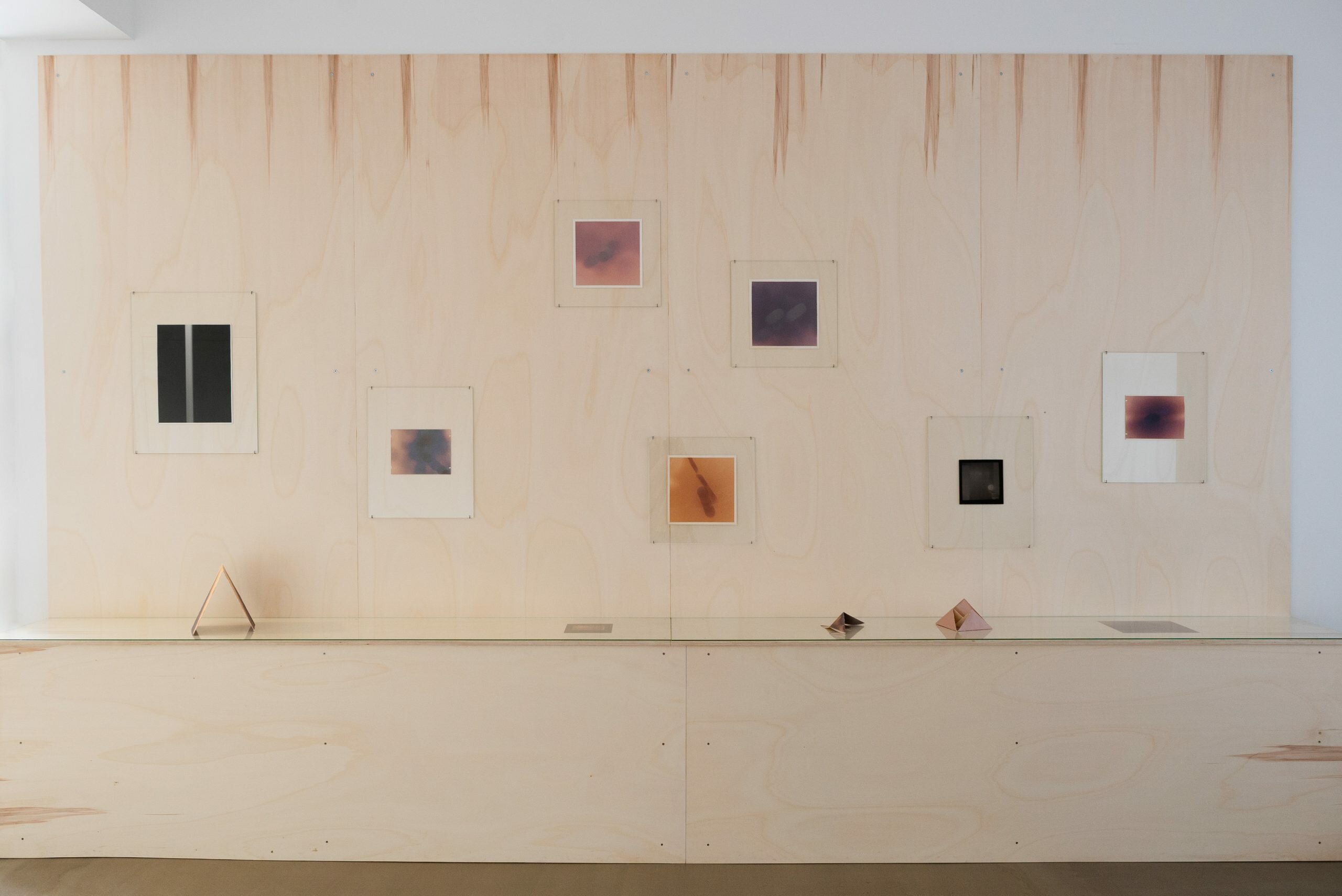


2020. </span >Photo © Laurynas Skeisgiela
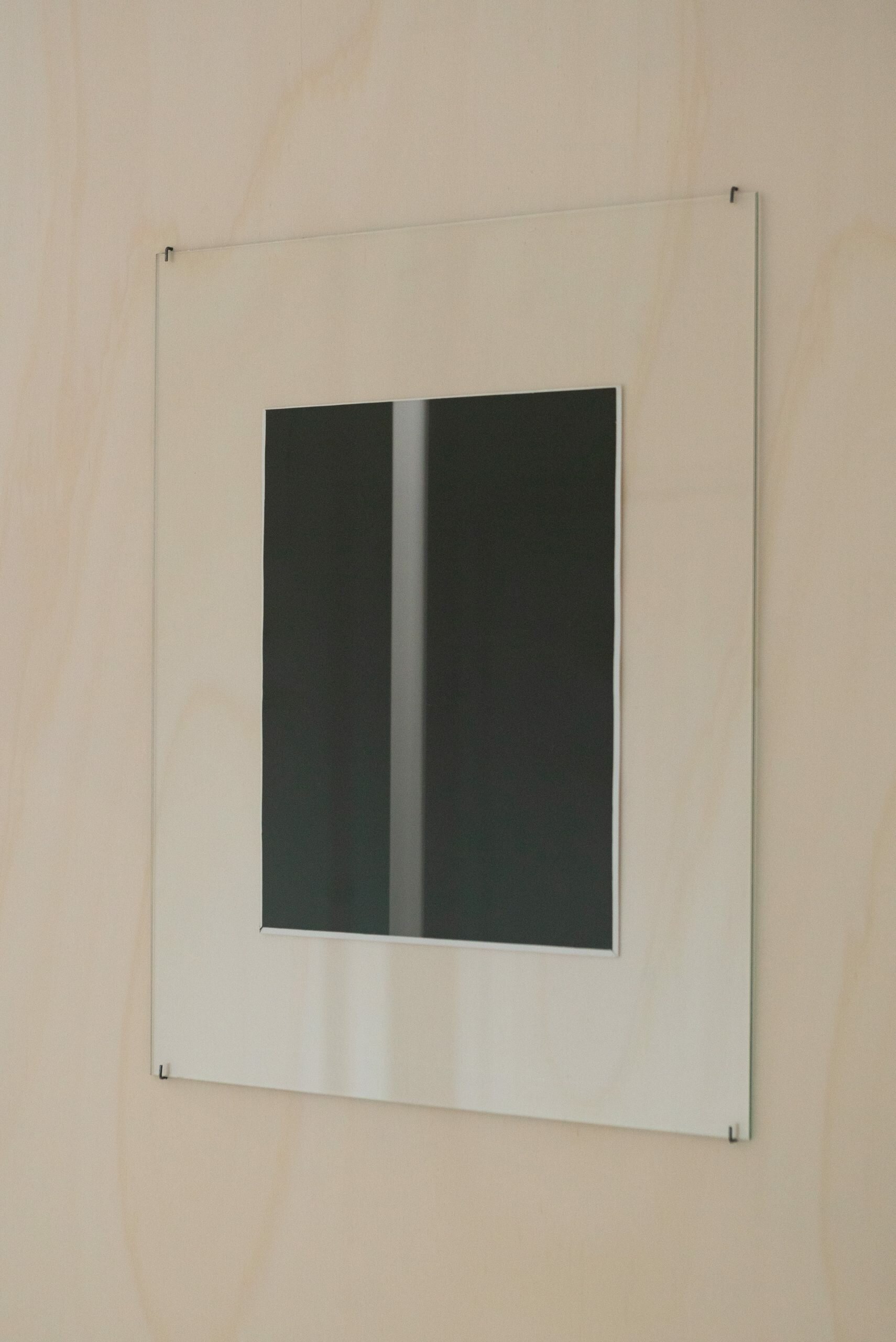
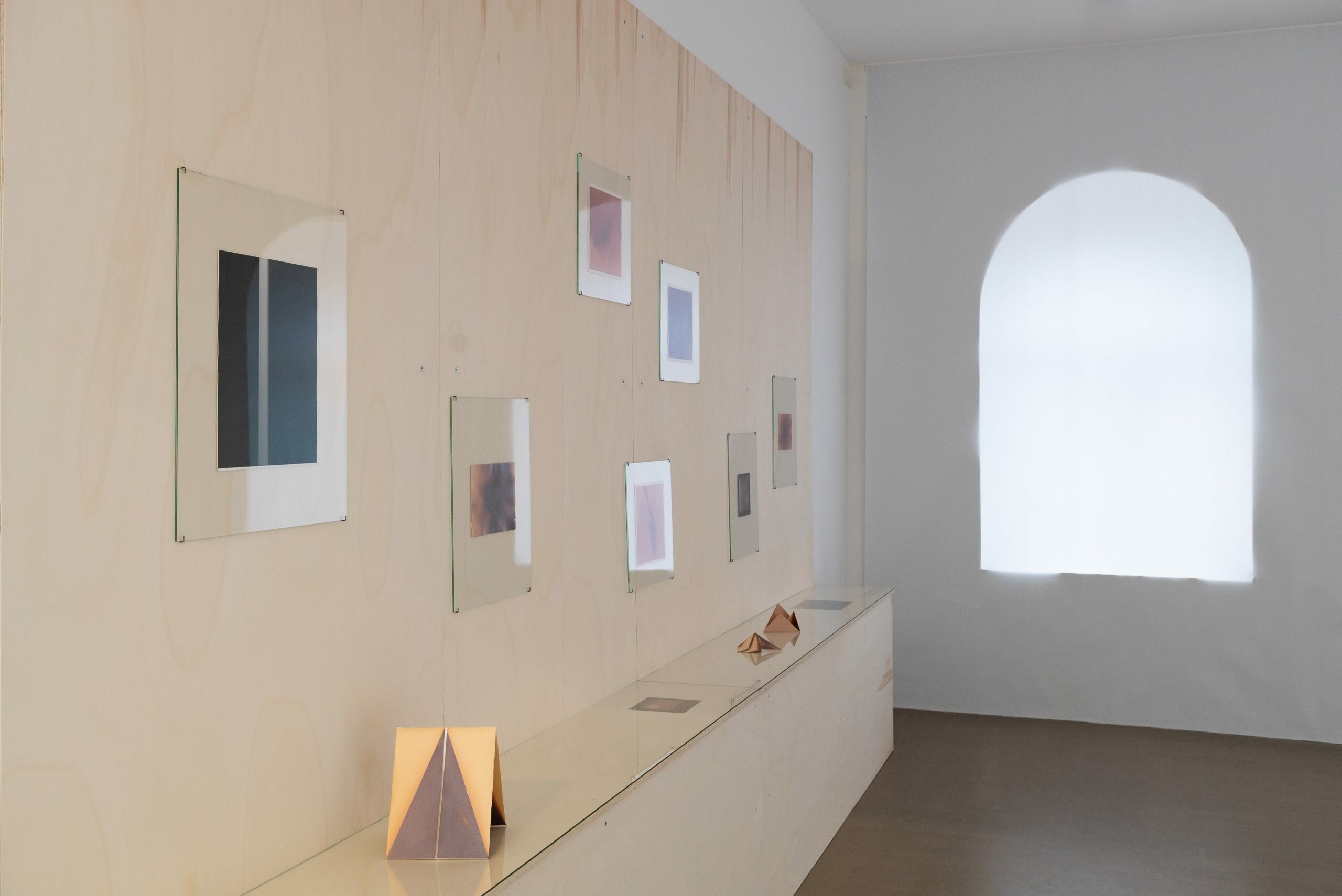

2018. </span >Photo © Laurynas Skeisgiela
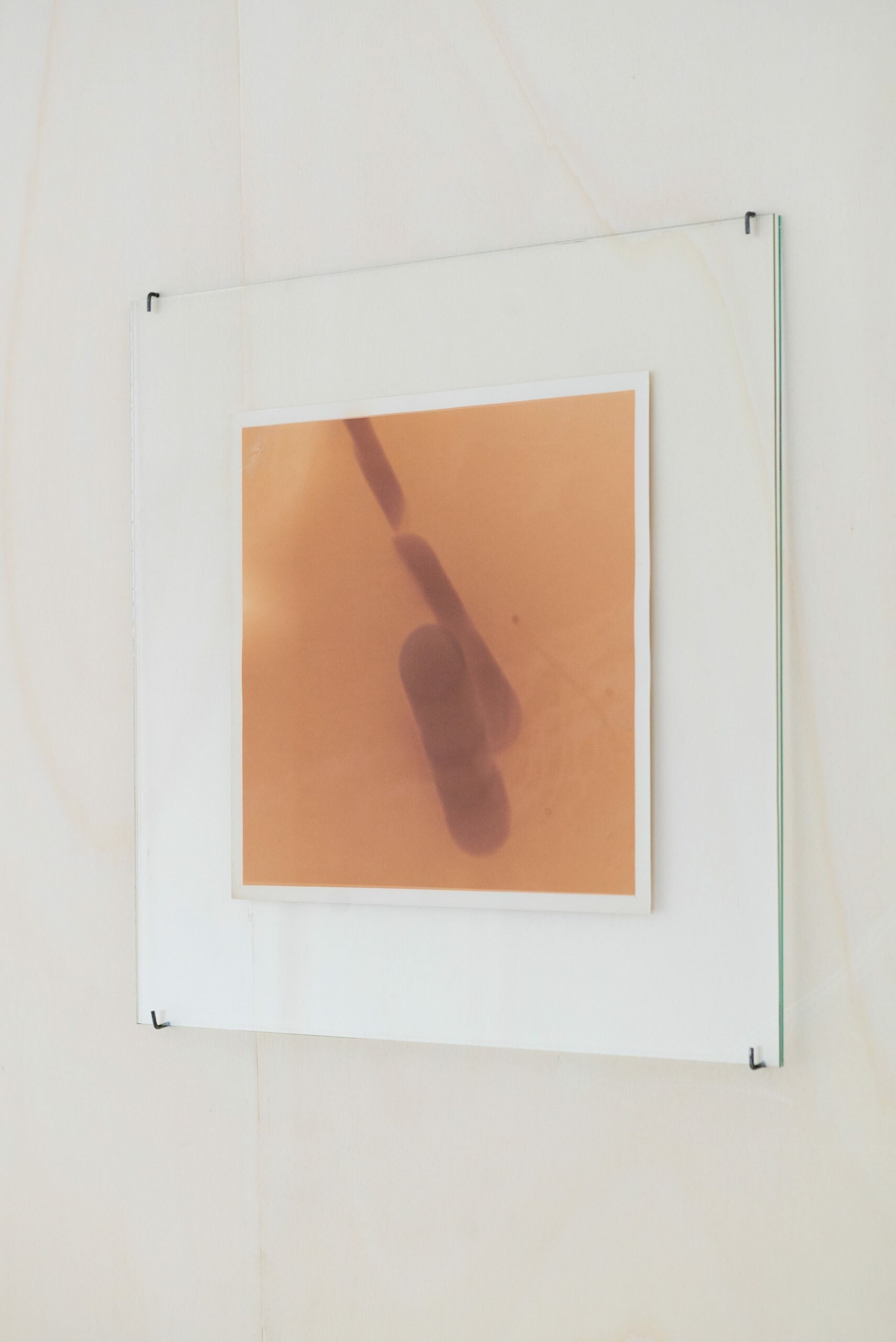


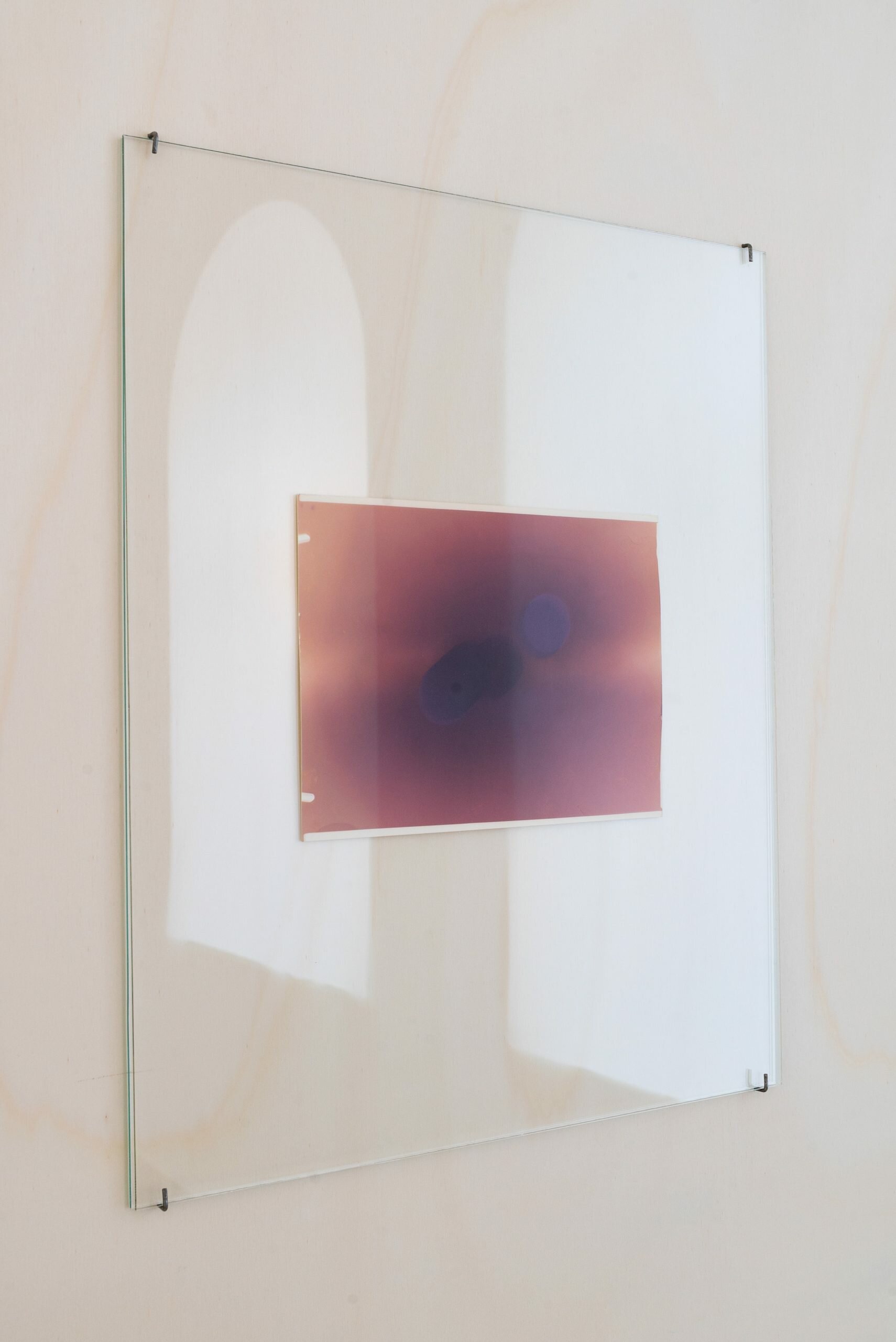
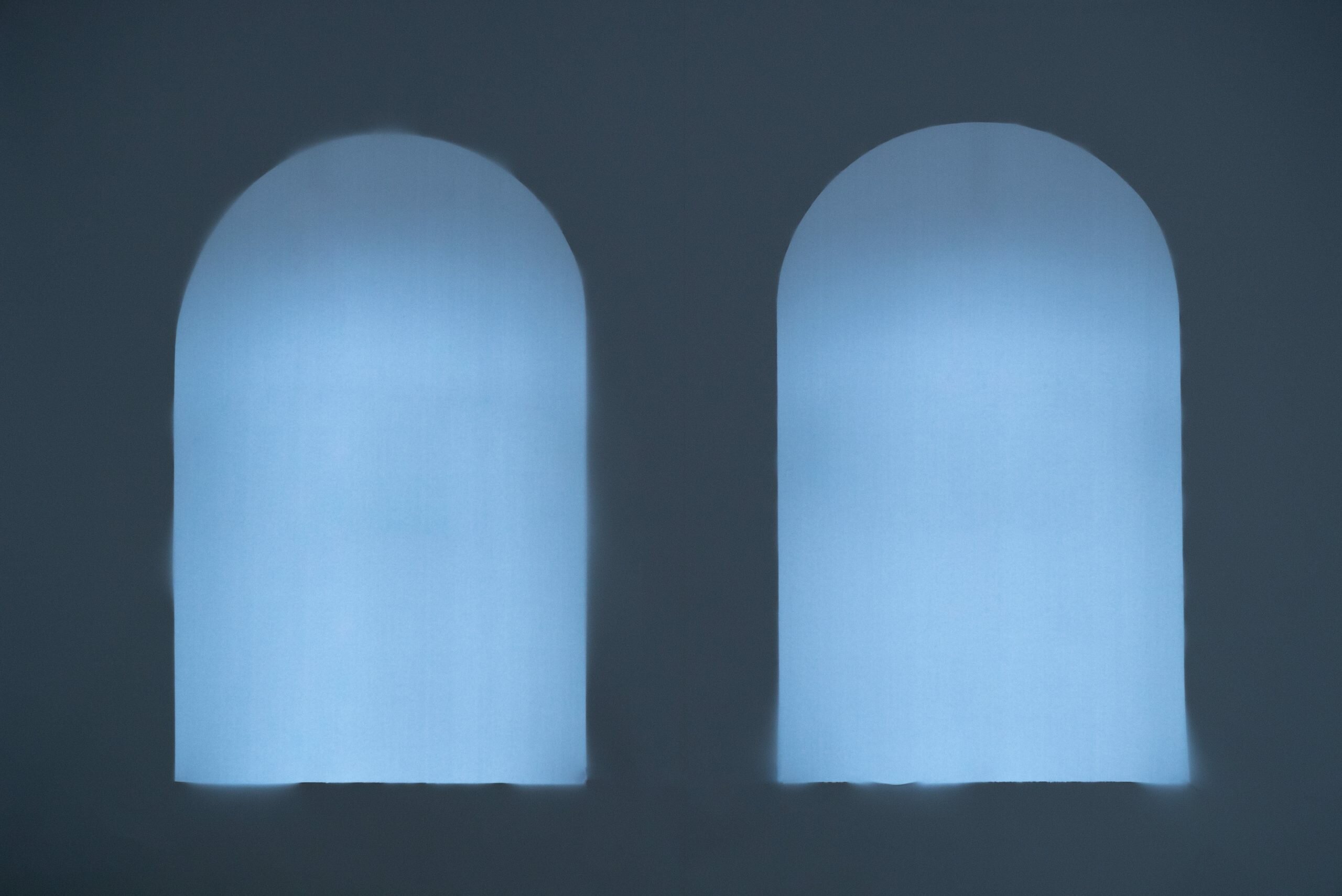
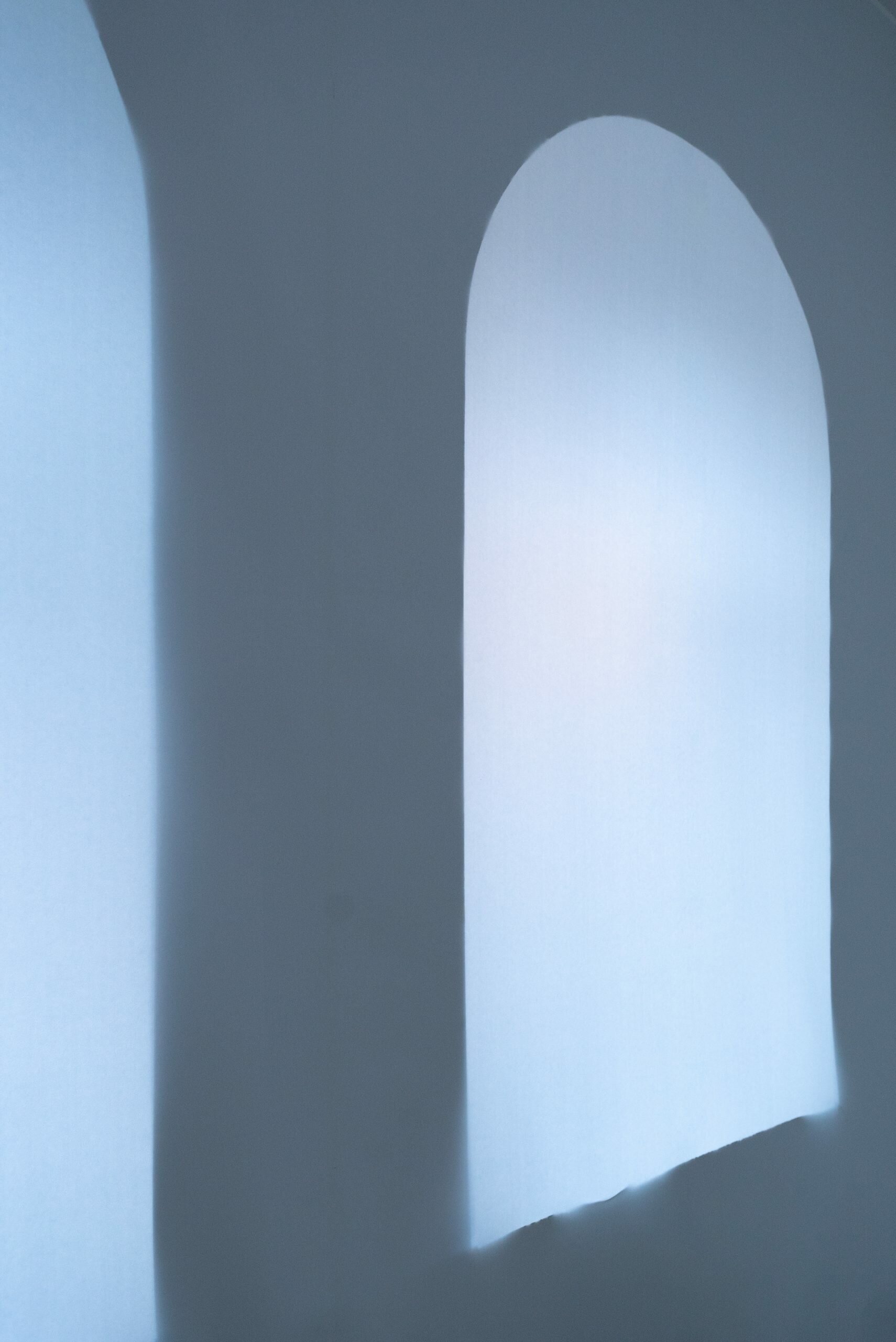

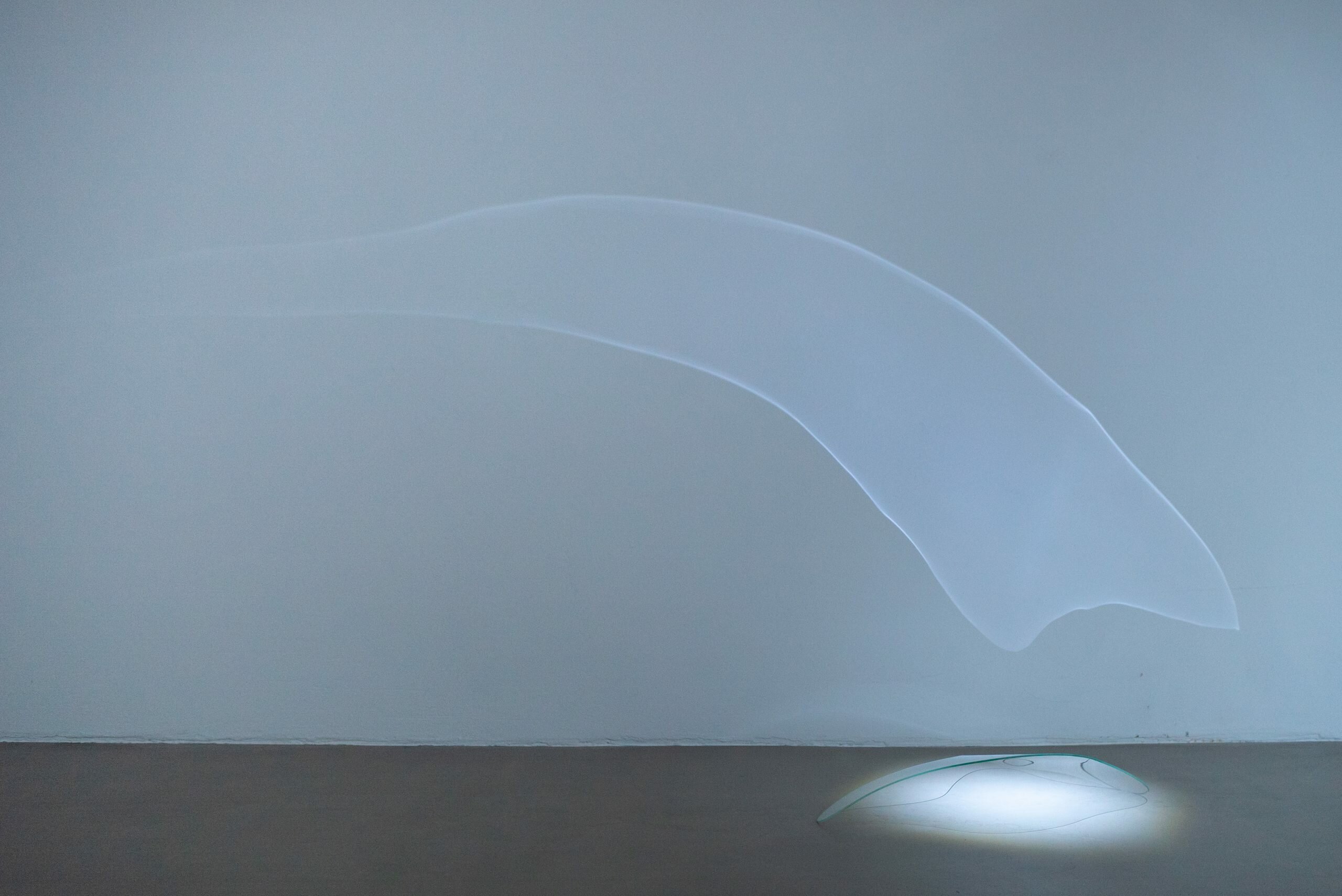




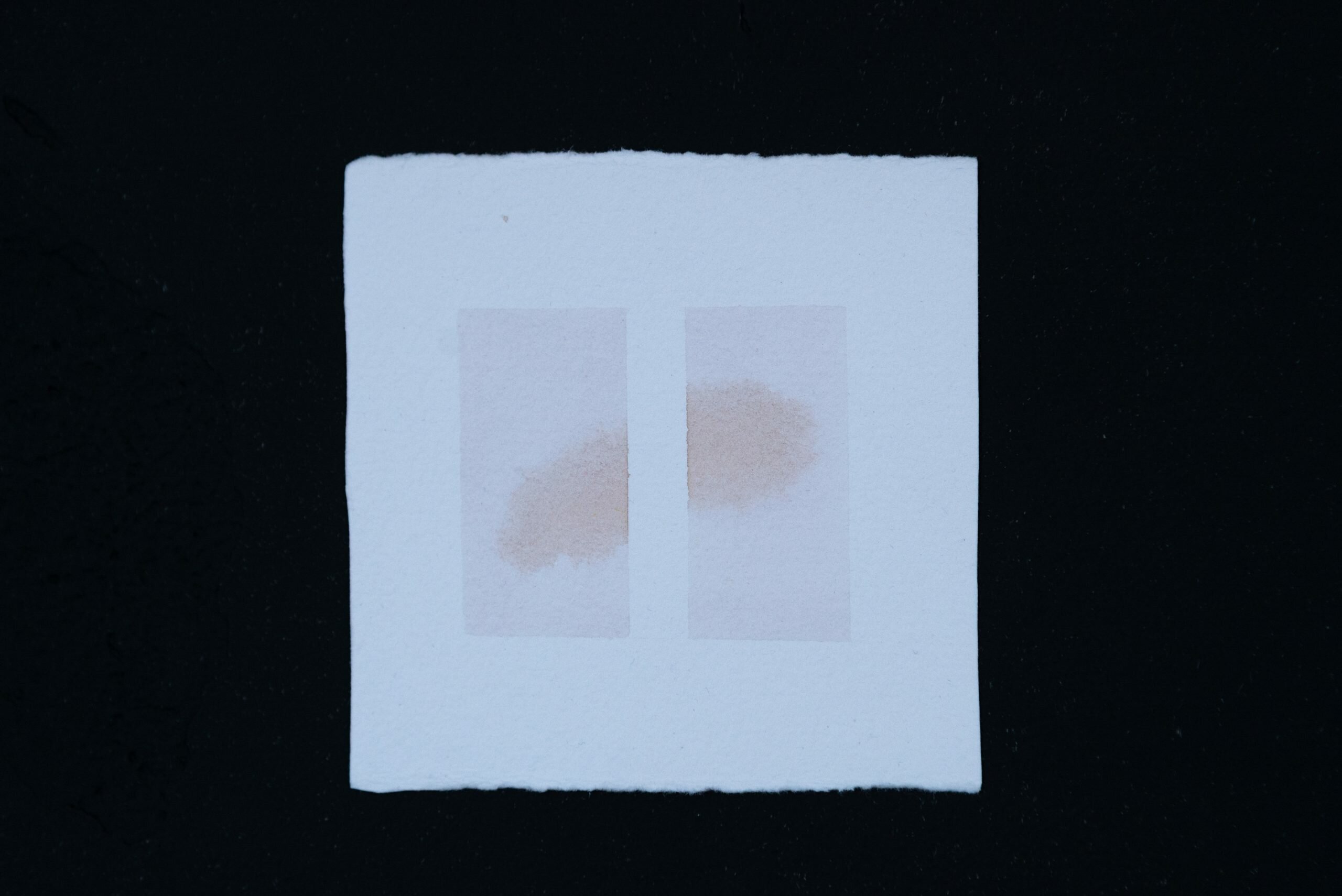

Pulse: Enlivenment of the Kaunas Ninth Fort Monument
Curator:
2020 10 03 – 04
Kaunas Artists’ House, Kaunas Ninth Fort Museum and project space Swallow invite you to the choreographic project Pulse directed by Romanian artist Alexandra Pirici. The project is dedicated to the enlivenment of the monument to the victims of Nazism of Kaunas Ninth Fort created by sculptor Alfonsas Vincentas Ambraziūnas (1933-2020). The act is choreographed for a group of up to 50 performers and taking place in the open-air area of the monument.
Alexandra Pirici quite oftenly uses the idea of sculpture that is moving and alive in her practice, exploring the relationship of the sculptural object and subject. Choreographing a larger group of performers, this time she proposed to enliven the sculptural concrete Kaunas Ninth Fort Monument.
Looking at the monument one could imagine the scale of tragedy and horror that it recalls, comments Romanian artist Alexandra Pirici. Touching it or interfering with it seems a matter of great care and precaution. Would there be a way in which a moving, sculptural addition of life presence and living bodies could support the monument in its anti-Nazi task?
Alexandra Pirici is an artist with a background in dance and choreography who works undisciplined, across different mediums. Her works have been exhibited at the decennial art exhibition Skulptur Projekte Munster 2017, the Romanian Pavilion of the 55th Venice Biennale, Tate Modern London, New Museum in New York, Art Basel Messeplatz, the 9th Berlin Biennale, Manifesta 10, Centre Pompidou in Paris, Museum Ludwig Cologne, Van Abbemuseum in Eindhoven, the Russian Museum in St. Petersburg, Neuer Berliner Kunstverein, HAU Theatre in Berlin, Museum of Modern Art Warsaw, the Chicago Architecture Biennale, among many others.
Organisers:
Kaunas Artists’ House, Kaunas Ninth Fort Museum, Project Space Swallow
Team:
Nicoleta Andrei, Rita Dabulskytė, Edgaras Gerasimovičius, Edvinas Grinkevičius, Saulė Noreikaitė, Marius Pečiulis, Rūta Stepanovaitė
Graphic design:
Inga Navickaitė-Drąsutė
Translation and proofreading:
Alexandra Bondarev
The project is financed by Lithuanian Council for Culture
Partners:
The Jewish Community of Kaunas
JCDecaux Lithuania
Information partners:
artnews.lt
echogonewrong.lt
Kaunas pilnas kultūros
Kauno diena
Thanks to:
Contemporary Dance Association
Dance studio “Infinitum”
Lithuanian Dance Information Centre
LMTA Department of dance and movement
Audrius Pocius
Vaida Stepanovaitė
PALYDOS
Gabrielė Adomaitytė, Viltė Bražiūnaitė ir Tomas Sinkevičius, Martin Ebner, Agnė Jokšė, Ona Juciūtė, Laura Kaminskaitė, and Nicholas Matranga
2020 08 06 – 09 17
Probably the first challenge that a freshly-born contemporary art space has to face is trying to grasp the time in which it will thrive. After all, every exhibition, text or artwork exhibited here will inevitably become a commentary on what is “contemporary” in contemporary art.
The time of ‘Palydos’ is a special time: the globe is still being shaken by the shock of the pandemic, speculations about what the future will look like are as contradictory as ever, while what unites their diversity and scenarios is only a general consensus that the future is bound to be completely different from the past; for after what has happened, nothing can remain as before. And yet these speculations remain blind as long as they are believed to speak of something more than just the time we live in now – giving voice to expectations, desires and traumas rooted in modernity and disguising them with the promise that this time will take on a different face than the present.
So Swallow’s first exhibition marks this journey from one uncertainty to another. A journey in which the traveller becomes more concerned with the concern itself rather than the final destination, and the city surrounding the path becomes increasingly pregnant with stories and fictions. These, in turn, haven taken root in reality, become free to speak of it from the perspective of possibility, able to reveal its contradictions, and grasp its deep tensions invisible to the naked eye.
For this city is made up as much of parks and squares as it is of stories of constant retelling, gradually sinking into these urban places. Moving from mouth to mouth, these stories change this space, at the same time changing themselves, transcending the boundaries of an individual being. On the one hand, this relay of constant retelling is inseparable from a conservative approach to the past, the preservation of heritage and the attempt to make it more “present” by sticking memorial plaques on walls and seating marble gentlemen in stone armchairs on the squares. On the other hand, it gives a voice to what we might call folklore – a certain “people’s throat” that gargles the same syllables until it transforms them into something new. Paradoxically, this never-ending retelling shows us that this “people’s throat” contains a kind of negative aspect to memory – it is important to hear what is being said, but even more important to listen to what remains silenced.
Thus, the works presented in ‘Palydos’ seek to immerse in this peculiar “swamp of the city’s subconscious” and grasp these orderless life forces spontaneously forming the city: a curiosity permeated with dreams, desperation or laziness, outbursts of hidden lust, dreams and hallucinations, thoughtlessly broken promises, exceptions to behaviour that summarize rules, or just wordless mutual understanding.
Graphic designer:
Vytautas Volbekas
Translation and proofreading:
Aleksandra Bondarev
Exhibition documentation:
Laurynas Skaisgiela
The project is financed by Lithuanian Council for Culture
Supporters:
UAB „Rėmelis“, Valdas Studio
Partners:
Starship magazine, echogonewrong.com, artnews.lt
Many thanks to:
Autarkia, Nick Bastis, Justė Beniušytė, Aleksandra Bondarev, Lina Blauzdavičiūtė, Vytautas Budziejus, Jokūbas Čižikas, Danutė Gambickaitė, Kipras Garla, Gailė Griciūtė, Ričardas Gerasimovičius, Antanas Gerlikas, Edvinas Grinkevičius, Adam Harrison, Eglė Juocevičiūtė, Petras Išora and Ona Lozuraitytė, Monika Kalinauskaitė, Kaunas Artists’ House, Valentinas Klimašauskas, Agnė Kuprytė, Matas Labašauskas,Lithuanian Interdisciplinary Artists’ Association, Ignas Meilūnas, Pilypas Misiukevičius, Beatričė Mockevičiūtė, Greta Milevičiūtė, Ariane Müller, Robertas Narkus, João Laia, Thomas Plantenga, Matthew Post, Valdas Pukevičius, Andrius and Mykolas Sinkevičiai, Greta Slivskytė, Antanas Stanislauskas, Aistė Marija Stankevičiūtė, magazine „Starship“, Rūta Stepanovaitė, Emilija Škarnulytė, Andrius Šoblinskas, Gintautas Trimakas, Rokas Vaičiulis, Kotryna Žukauskaitė
Reproduction of the picture used:
Stanislovas Bohušas-Sestšencevičius, „Children of Vilnius (Famine in Vilnius)“ / „Children in the Outskirts“. Oil on canvas. 210 x 205 cm, 1917. Courtesy of the Lithuanian National Museum of Art











